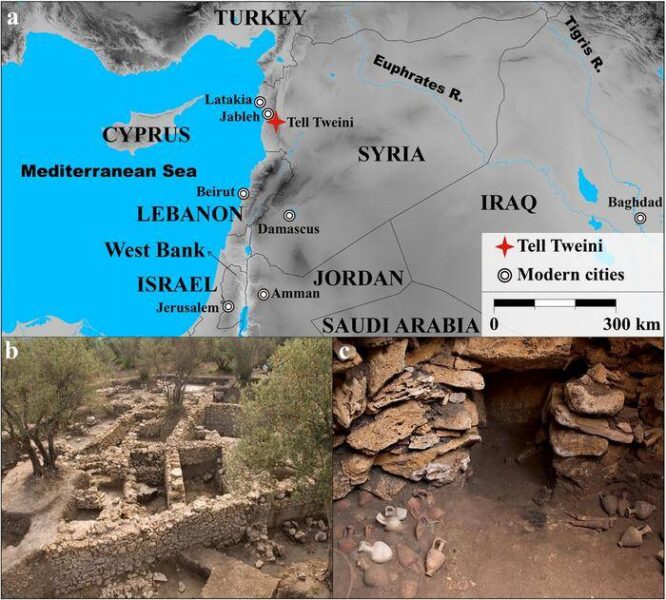Residents of ancient Syria likely consumed a diet similar to today’s “Mediterranean diet,” consisting primarily of grains, grapes, olives, and small amounts of dairy and meat, according to a study published June 12 in the open-access journal *PLOS ONE*. The research, led by Benjamin T. Fuller from the University of Leuven, Belgium, Simone Riehl from the University of Tübingen, Germany, and colleagues, sheds new light on the dietary habits and agricultural practices of people living in the region thousands of years ago.
The study focused on Tell Tweini, an archaeological site near the Syrian coastal city of Jableh, which contains relics spanning from the early Bronze Age (around 2,600 BCE) to the Iron Age, nearly 2,300 years later. By using isotopic analyses of plant, animal, and human remains from the site, researchers were able to map the flow of nutrients through the food chain and agricultural systems over time.
Middle Bronze Age Diet Mirrors Modern Mediterranean Diet
The most intriguing findings emerged from the Middle Bronze Age (between 2000 and 1600 BCE). Human remains from this period exhibited relatively low levels of δ15N, a nitrogen isotope, indicating a diet primarily based on plants, such as grains and olives. However, the presence of sheep, goat, and cattle remains at Tell Tweini suggests that these animals were occasionally consumed and used for milking, implying that local residents also had some animal-based protein in their diet. This dietary pattern closely resembles the modern-day “Mediterranean diet,” which emphasizes grains, fruits, and vegetables with limited animal products and is often praised for its health benefits.
Isotopic Analysis Reveals Insights into Climate and Agricultural Practices
In addition to shedding light on the dietary habits of ancient Syrians, the isotopic analyses from Tell Tweini also provide insights into the climate and agricultural practices of the time. For example, all of the grapes found at the site have relatively high levels of the Δ13 isotope of carbon, suggesting that the fruits received sufficient water and were well-tended throughout the site’s history.
The authors add: “Thanks to the interdisciplinary and technical progress of archaeological science, we can not only speculate on the existence of a long cultural tradition of the Mediterranean diet through taxonomic and typological determinations, but also extend these findings through additional analyses, e.g. of stable isotopes in human, animal and plant remains, and thus contribute to a better understanding of the emergence of cultural traditions in their anchoring in environmental and social dynamics.”
This study highlights the power of isotopic analysis in unraveling the dietary habits and agricultural practices of ancient civilizations, providing valuable insights into the cultural traditions and environmental dynamics that shaped their lives. As research in this field continues to advance, we can expect to gain a deeper understanding of how our ancestors lived and how their dietary choices influenced the development of cultural traditions that persist to this day.


